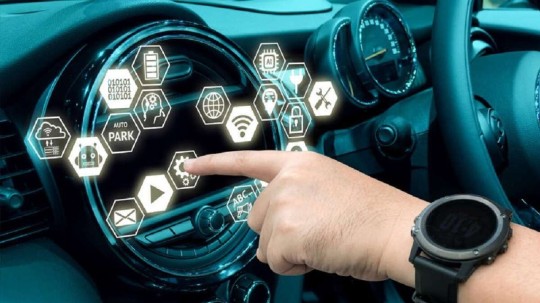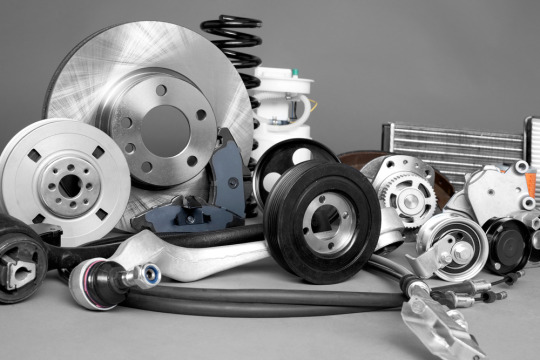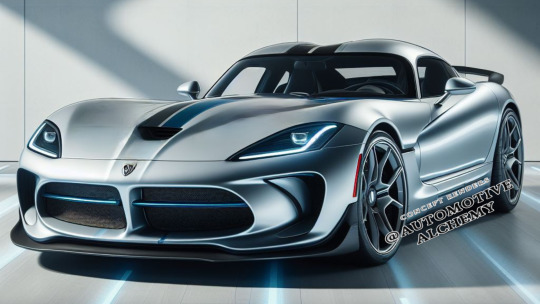#automotive electronics
Explore tagged Tumblr posts
Text

3 notes
·
View notes
Text
#hardware design#hardware design services#pcb assembly#pcb design#pcb manufacturer#pcba#pcbassembly#electronics design#automotive electronics
2 notes
·
View notes
Text
TDK launches compact PoC inductor to streamline ADAS and automotive electronics
June 19, 2025 /SemiMedia/ — TDK Corporation has unveiled the ADL8030VA series, a compact inductor optimized for power-over-coaxial (PoC) applications in automotive systems. Featuring high impedance across wide frequency ranges, the new inductor simplifies PoC filter designs by replacing multiple traditional inductors with a single component. This design streamlines wire harness architecture and…
#ADAS system#AEC-Q200#Automotive electronics#electronic components news#Electronic components supplier#Electronic parts supplier#PoC inductor#power efficiency#signal integrity
0 notes
Text
U.S. Automotive Battery Disconnect Unit Market: Doubling to $619.9 Million by 2032
The U.S. automotive battery disconnect unit market is experiencing robust growth, driven by evolving safety regulations, technological advancement, and the automotive industry's transformation toward electrification. Valued at USD 310 million in 2024, the market is projected to reach USD 619.9 million by 2032, representing an impressive compound annual growth rate (CAGR) of 9.2% during the 2025-2032 period. This substantial growth trajectory reflects the increasing importance of battery safety systems in modern vehicles and the critical role these units play in automotive electrical architecture.

Understanding Battery Disconnect Units: Critical Safety Components
Battery disconnect units serve as essential safety devices that isolate vehicle electrical systems from the battery power source. These sophisticated components provide emergency shutdown capabilities, protect against electrical hazards during maintenance, and ensure system safety during accidents or emergencies. As vehicles become increasingly electrified and electrical systems grow more complex, the importance of reliable battery disconnect solutions has never been greater.
The projected doubling of market value from USD 310 million to USD 619.9 million underscores the rapid adoption of these safety systems across various vehicle segments. This 9.2% CAGR significantly outpaces many traditional automotive component markets, reflecting the specialized nature and growing demand for battery disconnect technology.
Market Drivers Fueling Rapid Expansion
The electric vehicle revolution stands as the primary catalyst for battery disconnect unit market growth. As automakers accelerate EV production and consumers increasingly embrace electric mobility, the need for sophisticated battery management and safety systems intensifies. Electric vehicles require robust disconnect systems to handle high-voltage battery packs safely, creating substantial demand for advanced disconnect units designed specifically for EV applications.
Safety regulations and standards continue to evolve, mandating more comprehensive battery safety measures across vehicle categories. The National Highway Traffic Safety Administration (NHTSA) and other regulatory bodies are implementing stricter requirements for electrical system safety, driving OEM adoption of battery disconnect units as standard equipment rather than optional features.
Fleet electrification represents another significant growth driver. Commercial fleet operators, including delivery companies, transit authorities, and logistics providers, are transitioning to electric vehicles at an accelerated pace. These professional applications demand the highest levels of safety and reliability, making battery disconnect units essential components in fleet vehicle specifications.
Technological Innovation Driving Market Evolution
Modern battery disconnect units incorporate advanced technologies that extend far beyond simple electrical isolation. Smart disconnect systems feature integrated monitoring capabilities, providing real-time battery status information and enabling predictive maintenance strategies. These intelligent systems can detect electrical anomalies, monitor system health, and provide early warning of potential issues.
Wireless control and remote monitoring capabilities are becoming standard features in premium disconnect units. Fleet managers and service technicians can remotely monitor battery status, perform diagnostics, and even execute emergency disconnection procedures when necessary. This connectivity enhances safety while reducing maintenance costs and improving operational efficiency.
Miniaturization and integration advances allow manufacturers to develop more compact, lightweight disconnect units that can be seamlessly integrated into modern vehicle designs. These space-efficient solutions enable automakers to incorporate disconnect functionality without compromising vehicle packaging or aesthetics.
Market Segmentation and Application Areas
The passenger vehicle segment represents the largest market opportunity, driven by increasing EV adoption and regulatory requirements for enhanced electrical safety. Luxury and premium vehicle manufacturers are leading the adoption of advanced disconnect systems, with technology gradually trickling down to mainstream vehicle segments.
Commercial vehicle applications present significant growth potential, particularly in the medium and heavy-duty truck segments where electrification is gaining momentum. These vehicles typically operate in demanding environments where safety and reliability are paramount, making robust disconnect systems essential.
Emergency and service vehicle markets represent specialized high-value segments where disconnect units serve critical safety functions. Fire departments, emergency medical services, and utility companies require vehicles with comprehensive electrical safety systems to protect personnel during emergency operations.
Competitive Landscape and Industry Dynamics
The U.S. market features a mix of established automotive suppliers and specialized safety equipment manufacturers. Companies with expertise in electrical systems, safety components, and automotive electronics are positioned to capitalize on market growth opportunities. Strategic partnerships between disconnect unit manufacturers and major automakers are becoming increasingly common as OEMs seek to integrate advanced safety systems.
Technology differentiation plays a crucial role in competitive positioning. Manufacturers offering the most advanced features, highest reliability, and best integration capabilities are capturing premium market segments and establishing long-term customer relationships.
Regulatory Environment and Standards
Federal safety regulations continue to evolve, with new standards addressing high-voltage electrical systems in vehicles. The Federal Motor Vehicle Safety Standards (FMVSS) are being updated to include specific requirements for electrical system safety, creating mandatory demand for disconnect units in certain vehicle categories.
State-level regulations and incentive programs for electric vehicles indirectly drive disconnect unit adoption by accelerating EV market growth. California's Advanced Clean Cars Program and similar initiatives in other states create substantial demand for vehicles equipped with comprehensive safety systems.
Challenges and Market Considerations
Despite strong growth prospects, the market faces challenges including supply chain complexities, component shortages, and the need for specialized manufacturing capabilities. The semiconductor shortage that has impacted the automotive industry also affects smart disconnect units that rely on electronic components.
Cost pressures from automakers seeking to control vehicle prices while adding advanced safety features require disconnect unit manufacturers to balance performance with affordability. Achieving this balance while maintaining quality and reliability standards presents ongoing challenges.
Future Outlook and Growth Opportunities
The path to USD 619.9 million by 2032 will be driven by continued EV adoption, regulatory evolution, and technological advancement. Companies that successfully develop innovative, cost-effective solutions while maintaining the highest safety standards will capture the greatest share of this rapidly expanding market.
As the automotive industry continues its transformation toward electrification and enhanced safety, battery disconnect units will play an increasingly vital role in ensuring vehicle and occupant protection.
#automotive battery disconnect unit#vehicle electrical safety#EV battery safety#automotive safety systems#battery isolation switch#electric vehicle components#automotive electronics#battery management systems#vehicle safety regulations#automotive electrical systems#emergency disconnect#battery safety switch#EV safety equipment#automotive battery technology#vehicle electrical protection#battery disconnect switch#automotive safety components#electric vehicle safety#battery cutoff switch#automotive electrical isolation
0 notes
Text
FR4 Machined Components in Automotive Electronics: 5 Critical Applications
In the rapidly evolving automotive electronics sector, FR4 machined components have become indispensable for ensuring reliability, durability, and performance. As vehicles incorporate more advanced electronic systems, the demand for precision-machined FR4 parts continues to grow. Let’s explore five key applications where FR4 machining makes a critical difference. Why FR4 for Automotive…
0 notes
Text
Automotive Electronics
Automotive Electronics Production Automation
The automotive industry is undergoing a significant transformation, driven by the rise of electric vehicles (EVs), autonomous driving technologies, and advanced in-car electronics. As automotive electronics continue to evolve, manufacturers are increasingly relying on automation to enhance production efficiency, improve quality, and meet the rising demand for complex electronic systems. We specialize in providing automation solutions for automotive electronics production, ensuring that every component—from advanced sensors to in-car infotainment systems—is manufactured with precision, speed, and reliability.
We bring expertise and innovation to automotive electronics production through our custom automation solutions. Whether you are manufacturing advanced sensors, power management systems, or infotainment modules, we provide tailored solutions that meet the unique needs of the automotive electronics industry. Our team works closely with you to understand your production challenges and deliver automation that enhances efficiency, precision, and product quality.
0 notes
Text
0 notes
Text
youtube
Power Integrations: Unboxing DER 953Q - 100W Automotive Power Supply
https://www.futureelectronics.com/m/power-integrations . DER-965Q describes a 10 W non-isolated buck power supply for 400 V BEV automotive applications. This single-side board design uses AEC Q-qualified components. The ultra compact design allows 60-550 VDC wide input range and a 15 VDC / 650 mA output. https://youtu.be/l4J7WT2amqw
#DER-953Q#100W automotive power supply#900V PowiGaN#InnoSwitch3-AQ#power supply design#automotive electronics#power supply#Power Integrations#PI#future#fe#future electronics#tech#new tech#chips#Unboxing#Youtube
0 notes
Text
Driving into the Future: The Role of Automotive Electronics
In the rapidly advancing landscape of automotive technology, electronics play a pivotal role in shaping the future of transportation. The integration of sophisticated electronic systems has transformed vehicles from mere modes of transportation into smart, connected entities. This article explores the evolution of automotive electronics, the key technologies driving this evolution, and the…

View On WordPress
#Automotive electronics#Automotive Innovation#Electric Vehicles#Future of Automotive Electronics#Infotainment Systems#Vehicle Electronics
0 notes
Text
Europe Automotive Parts Remanufacturing Market is Estimated To Witness High Growth Owing To Increasing Focus on Sustainable Solutions

The Europe automotive parts remanufacturing market is estimated to be valued at US$14.23 Mn in 2022 and is expected to exhibit a CAGR of 7.8% over the forecast period 2023 to 2030, as highlighted in a new report published by Coherent Market Insights. The demand for automotive parts remanufacturing is increasing due to its various advantages such as cost-effectiveness, reduced environmental impact, and improved performance.
A) Market Overview:
Automotive parts remanufacturing involves the process of restoring used automotive parts to their original condition through cleaning, repairing, and replacing any damaged components. This process requires less energy and resources compared to manufacturing new parts, making it a more sustainable solution. The demand for remanufactured automotive parts is driven by the rising need for cost-effective replacement options and the growing focus on environmental sustainability.
B) Market Key Trends:
One key trend observed in the Europe Automotive Parts Remanufacturing Market is the increasing adoption of circular economy principles by automotive manufacturers. The circular economy aims to maximize the value of resources by promoting the reuse and recycling of products. In line with this, several automotive manufacturers are partnering with remanufacturing companies to offer remanufactured parts as an alternative to new ones. For example, ZF Friedrichshafen AG, a leading automotive technology company, offers remanufactured transmissions and power steering systems. This trend not only reduces costs for consumers but also contributes to the reduction of waste and greenhouse gas emissions.
C) PEST Analysis:
Political: Government regulations and policies play a key role in shaping the automotive parts remanufacturing market. Governments across Europe are implementing stringent regulations to reduce carbon emissions and promote sustainability in the automotive industry. These regulations support the growth of remanufacturing by encouraging the use of remanufactured parts.
Economic: The economic factors driving the adoption of remanufactured automotive parts include cost-effectiveness and improved affordability for consumers. Remanufactured parts are typically priced lower than new ones, making them an attractive option for cost-conscious consumers.
Social: Increasing awareness about the environmental impact of automotive waste and the need for sustainable solutions is driving the demand for remanufactured automotive parts. Consumers are becoming more conscious of their purchasing decisions and are actively seeking eco-friendly alternatives.
Technological: Advancements in technology, such as advanced cleaning and repair techniques, have improved the quality and reliability of remanufactured automotive parts. These technological advancements have further boosted the adoption of remanufactured parts in the automotive industry.
#coherent market insights#automotive electronics#Automotive and Transportation#Europe Automotive Parts Remanufacturing Market#Automotive Engineering
0 notes
Text
Smart Traction: Intelligent All-Wheel Drive Market Accelerates to $49.3 Billion by 2030
The intelligent all-wheel drive market is experiencing remarkable momentum as automotive manufacturers integrate advanced electronics and artificial intelligence into drivetrain systems to deliver superior performance, safety, and efficiency. With an estimated revenue of $29.9 billion in 2024, the market is projected to grow at an impressive compound annual growth rate (CAGR) of 8.7% from 2024 to 2030, reaching $49.3 billion by the end of the forecast period. This robust growth reflects the automotive industry's evolution toward smarter, more responsive drivetrain technologies that adapt dynamically to changing road conditions and driving scenarios.

Evolution Beyond Traditional All-Wheel Drive
Intelligent all-wheel drive systems represent a significant advancement over conventional mechanical AWD configurations, incorporating sophisticated electronic controls, multiple sensors, and predictive algorithms to optimize traction and handling in real-time. These systems continuously monitor wheel slip, steering input, throttle position, and road conditions to make instantaneous adjustments to torque distribution between front and rear axles, and increasingly between individual wheels.
Unlike traditional AWD systems that react to wheel slip after it occurs, intelligent systems use predictive algorithms and sensor data to anticipate traction needs before wheel slip begins. This proactive approach enhances vehicle stability, improves fuel efficiency, and provides superior performance across diverse driving conditions from highway cruising to off-road adventures.
Consumer Demand for Enhanced Safety and Performance
Growing consumer awareness of vehicle safety and performance capabilities is driving increased demand for intelligent AWD systems. Modern drivers expect vehicles that can confidently handle adverse weather conditions, challenging terrain, and emergency maneuvering situations. Intelligent AWD systems provide these capabilities while maintaining the fuel efficiency advantages of front-wheel drive during normal driving conditions.
The rise of active lifestyle trends and outdoor recreation activities has increased consumer interest in vehicles capable of handling diverse terrain and weather conditions. Intelligent AWD systems enable crossovers and SUVs to deliver genuine all-terrain capability without compromising on-road refinement and efficiency.
SUV and Crossover Market Expansion
The global shift toward SUVs and crossover vehicles is a primary driver of intelligent AWD market growth. These vehicle segments increasingly offer AWD as standard equipment or popular options, with intelligent systems becoming key differentiators in competitive markets. Manufacturers are positioning advanced AWD capabilities as premium features that justify higher trim levels and increased profitability.
Luxury vehicle segments are particularly driving innovation in intelligent AWD technology, with features such as individual wheel torque vectoring, terrain-specific driving modes, and integration with adaptive suspension systems. These advanced capabilities create compelling value propositions for consumers seeking both performance and versatility.
Electric Vehicle Integration Opportunities
The electrification of automotive powertrains presents unique opportunities for intelligent AWD systems. Electric vehicles can implement AWD through individual wheel motors or dual-motor configurations that provide precise torque control impossible with mechanical systems. Electric AWD systems offer instant torque delivery, regenerative braking coordination, and energy management optimization.
Hybrid vehicles benefit from intelligent AWD systems that coordinate internal combustion engines with electric motors to optimize performance and efficiency. These systems can operate in electric-only AWD mode for quiet, emissions-free driving or combine power sources for maximum performance when needed.
Advanced Sensor Technology and Data Processing
Modern intelligent AWD systems incorporate multiple sensor technologies including accelerometers, gyroscopes, wheel speed sensors, and increasingly, cameras and radar systems that monitor road conditions ahead of the vehicle. Machine learning algorithms process this sensor data to predict optimal torque distribution strategies for varying conditions.
GPS integration enables intelligent AWD systems to prepare for upcoming terrain changes, weather conditions, and road characteristics based on location data and real-time traffic information. This predictive capability allows systems to optimize performance before challenging conditions are encountered.
Manufacturer Competition and Innovation
Intense competition among automotive manufacturers is driving rapid innovation in intelligent AWD technology. Brands are developing proprietary systems with unique characteristics and branding to differentiate their vehicles in crowded markets. This competition accelerates technological advancement while providing consumers with increasingly sophisticated options.
Partnerships between automotive manufacturers and technology companies are creating new capabilities in intelligent AWD control systems. Artificial intelligence, cloud computing, and advanced materials are being integrated to create more responsive and efficient systems.
Regional Market Dynamics
Different global markets exhibit varying demand patterns for intelligent AWD systems based on climate conditions, terrain characteristics, and consumer preferences. Northern markets with harsh winter conditions show strong demand for advanced traction systems, while emerging markets focus on systems that provide value-oriented performance improvements.
Regulatory requirements for vehicle stability and safety systems in various regions influence the adoption of intelligent AWD technology. Standards for electronic stability control and traction management create baseline requirements that intelligent AWD systems can exceed.
Manufacturing and Cost Considerations
The increasing sophistication of intelligent AWD systems requires significant investment in research and development, manufacturing capabilities, and supplier relationships. However, economies of scale and advancing semiconductor technology are helping to reduce system costs while improving performance and reliability.
Modular system designs enable manufacturers to offer different levels of AWD sophistication across vehicle lineups, from basic intelligent systems in entry-level models to advanced torque-vectoring systems in performance vehicles.
#intelligent all-wheel drive#smart AWD systems#advanced traction control#automotive drivetrain technology#AWD market growth#intelligent torque distribution#electronic stability control#vehicle dynamics systems#all-terrain vehicle technology#automotive safety systems#performance AWD#electric vehicle AWD#hybrid drivetrain systems#torque vectoring technology#predictive AWD control#adaptive traction systems#automotive electronics#drivetrain electrification#active differential systems#terrain management systems#AWD coupling technology#automotive sensors#machine learning automotive#AI-powered drivetrain#connected vehicle systems#autonomous driving technology#SUV market growth#crossover vehicle technology#premium automotive features#automotive innovation trends
0 notes
Text

Dodge Viper SRT-E All Electric Supercar Concept
#autos#cars#automotive#coupe#luxury car#sports cars#dodge concept#dodge#muscle car#american muscle car#hemi#classic cars#classic car#dodge viper#electric cars#electronic#electric vehicles#elegant
162 notes
·
View notes
Text
Choosing the Right IoT Module for Your Project: A Beginner’s Guide

Choosing the right IoT module is essential for a successful project. As a beginner, start by considering factors like connectivity (Wi-Fi, Bluetooth, or cellular), power consumption, range, and compatibility with other components. By aligning your project goals with module features, you’ll find an IoT module that perfectly fits your needs.
#system in package#automotive electronics#car electronics#ev power module#wifi module#system on module#iot module
0 notes